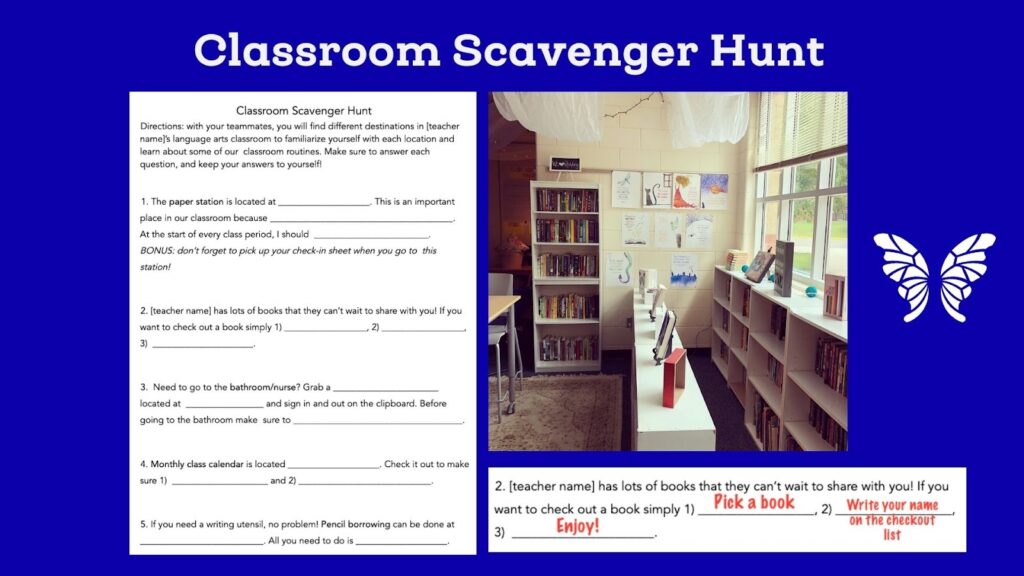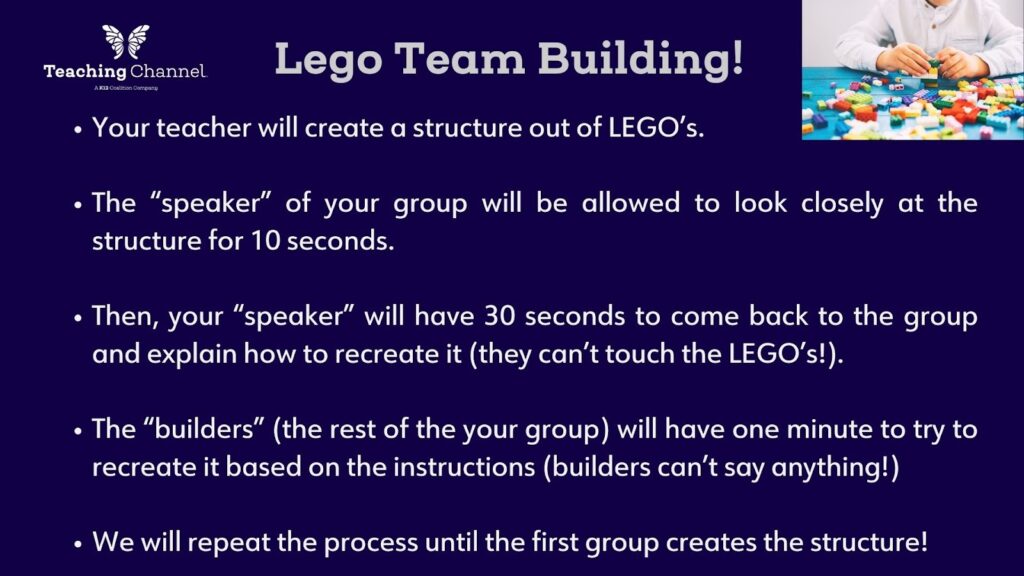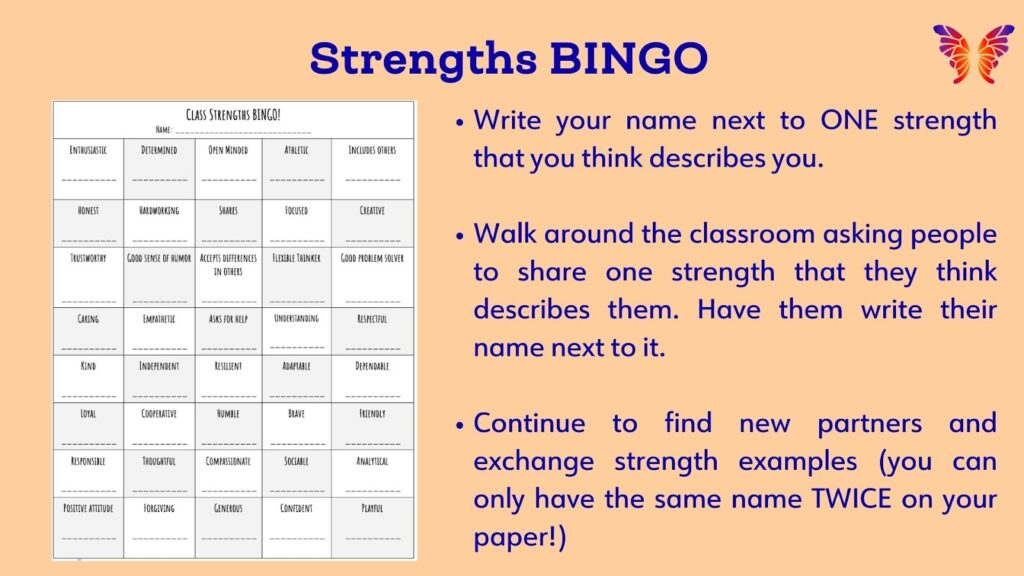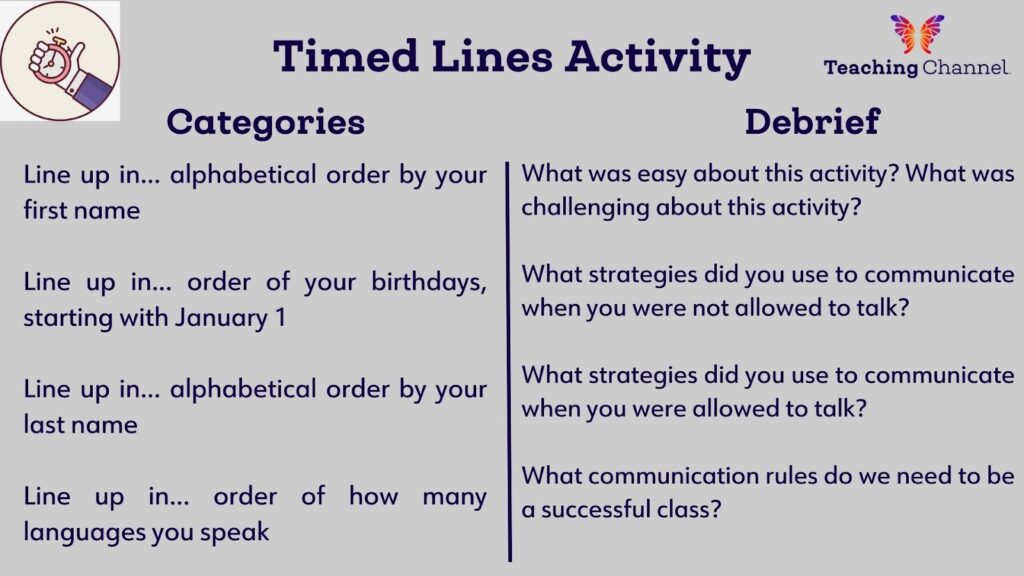The start of a new school year always brings anticipation and excitement for students and educators alike. Sometimes that excitement sounds like boisterous energy in the classroom and lots of chatter, giggles, and noise. Other times, that anticipation can look like 30 sets of eyes staring at you and a nervous silence that feels impossible to break. Fear not! The following community-building activities will help students get to know each other and foster conversations about communication norms that your students will reference for the rest of the school year.
1. Classroom Scavenger Hunt

This is a great activity for students to get to know your classroom space! Students travel around the classroom with a partner to find notecards with important information about different elements of your learning space (bathroom passes, iPad charging station, etc). The first groups to find all of the scavenger hunt stations win (bonus: candy prizes always sweeten the deal)! Grab a copy of the Classroom Scavenger Hunt!
2. Counting to 20

Counting to 20 is a great community-building activity because it requires ZERO preparation. The rules are simple: count to 20 as a class with only ONE person speaking at a time. If two people speak at the same time, the class has to start over. The catch? Everyone has to have their eyes closed :). Students are often surprised by how challenging this is to do—it can take anywhere from 5 minutes to 30! Following the activity, students are able to debrief and discuss the importance of communication norms as well as the idea of “stepping forward or stepping back” in a conversation. Try this fun activity that students will continue referring back to for the rest of the school year!
3. Lego Team Building

This one is for the tactile learners! In this activity, the facilitator/teacher will create a random design using Legos. One member of each group will be the “speaker.” The speaker will be the only one allowed to look at the Lego design. After studying the design, the speaker returns to their group and verbally explains what the design looks like, but they are not allowed to touch the Legos. The rest of the group members (also known as the “builders”) must listen to the speaker’s directions and construct the Lego design, but they are not allowed to speak. This activity helps students identify the benefits (and challenges!) of different modes of communication while also acknowledging that each group member brings unique and important skills to the table.
4. Strengths Bingo

This activity gamifies getting to know you AND helps students identify and celebrate their strengths! Sounds like a win-win, right? First, each student receives a Class Strengths Bingo card. After pre-teaching and defining what each strength means, students travel around the classroom trying to find classmates who describe themselves as having these strengths. By the end of the activity, you will hear students exclaiming things like, “Ruby is honest AND resilient” and “I am kind!” Grab a copy of the Strengths Bingo Board for your own classroom!
5. Timed Lines

The Timed Lines activity is a great way for students to practice nonverbal communication skills. Each round students are given a task (line up in alphabetical order by your first name, line up from oldest to youngest, line up by height, etc.) and students must complete the task without speaking. Students enjoy coming up with creative solutions to this task (from writing their birthdate on notecards to using their fingers to show their birth date) and leaders often emerge throughout the activity who help facilitate different strategies. This is a great opportunity to debrief communication skills and ways of respectfully negotiating with peers to problem solve!
Opportunities to build class community and foster communication skills are a win-win for the start of the school year! Break the ice and turn up the volume as your students interact, laugh, and engage with each other this fall!







